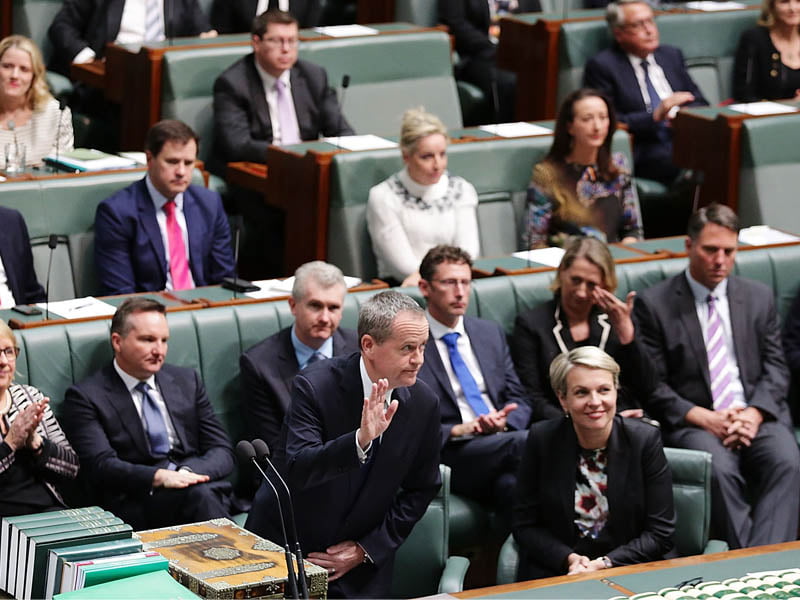The need to increase productivity and hence to foster innovation isn’t restricted to Australia. It is a phenomenon common across all economies.
A hurdle for small innovative firms – popularly known as start-ups – has been finding finance. Consequently, governments in many countries have sought to address the financing gap and perceived market failures by supporting the seed and early stage market.
It is unsurprising then that the OECD has been focussing on policy initiatives in this area. What is perhaps more surprising is how valuable their most recent contribution is.

The OECD Directorate for Science, Technology and Innovation (STI) paper Policy Lessons from Financing Young Innovative Firms issued in June seeks to summarise the lessons learned in seed and early stage finance for young innovative firms.
The research was motivated by the increasing incidence of supply side interventions by governments. It concluded that there is little evidence on the effectiveness of these programs, though it notes that “recent studies seem to imply that a mix of public and private venture capital funding can have a positive impact.”
Bill Shorten’s proposed Smart Investment Fund is an example of a supply side intervention, and is the kind of model the paper suggests can have a positive impact.
The paper explains why financing for “young innovative firms” – those typically called ‘startups’ – is a challenge. The first is the nature of the financing, it comes in waves. Typically the first wave is founders, friends and family; the second is the so-called ‘angel’ investors, and then the venture capital sector. A new small business in existing sectors like hospitality or trade is likely to obtain all its funding at initiation.
The second major difference is how severe the information asymmetry is in the case of “young innovative firms.” Not only is the management capability untested, but so is the underlying business model.
This extreme information asymmetry has been the core justification for government intervention in this market. It is positioned as a “market failure” hence justifying government intervention.
The paper identifies the potential of spillovers as another reason for supporting the financing of young innovative firms. It cites research that “that there is a causal link between venture capital investments and employment growth.” The research seems to be more robust than the research recently criticised here.
The core focus of the report is the discussion that follows that if there is a financing gap for young innovative firms, a whole suite of measures needs to be considered. These measures cover both the supply and demand sides.
Aside from government grants, supply can be facilitated by tax incentives or direct government equity investments. Changing the regulatory framework for new investments to include crowd sourced equity and to reduce labour bills through employee share schemes also are supply side actions.
But the report also suggests that there are improvements that can be made on the demand side.
That includes strategies to increase the total number of investment opportunities, through the development of entrepreneurial culture and entrepreneurial eco-systems. It cautions against government trying to create these, but government can encourage them through incentives or support.
But it is in the field of human capital and social capital development that the most novel suggestions appear. Apart from growing the pool of potential innovators through focusing on STEM skills, human resource development should also focus on training potential investors and new businesses in the processes of starting and running new businesses.
That is one of the particular values of angel investors. They are typically former successful innovators themselves who not only invest but also coach the innovators. Good venture capital funds take this a stage further; they not only invest but also add to the management capability of the firm.
But there is a lot of variability in these fields, including the time horizon over which the investors want to stay with the business. One of the most impressive parts of some of the biggest startups (and particularly Google) is how long investors avoided the early investor exit through IPO.
Again it is important to distinguish financing for a young innovative firm from financing for most other small businesses. The latter, like a restaurant, is a known field with fairly predictable metrics. A startup is by definition not dealing in a market that can be easily dimensioned, nor dealing with a cost structure that can be easily forecast.
The differences between ordinary new businesses and innovative businesses explain the success of the Lean Startup methodology. While in its totality this is innovative, it really builds on some of the lessons from the 80s management hit In Search of Excellence. Ultimately success in innovation comes from two things – not being afraid to fail, but also being prepared to fail fast.
Australia isn’t renowned for the quality of its management. The Report of the non-government members of former Prime Minister Julia Gillard’s manufacturing taskforce noted “Specific Australian weaknesses are identified in innovation, technological readiness and management capabilities.” That this is based on the otherwise unreliable Global Competitiveness Index is less of an issue since this is business leaders’ own assessments of management capabilities.
Governments provide lots of advice to potential small business owners, but from brief analysis most of it is focussed on the classic process of developing a business plan and seeking funding in known industries.
There are Business Schools offering MBAs in Entrepreneurship, but I suspect real entrepreneurs are spending that $30,000 and two years of their lives building the Minimum Viable Product. Those degrees may be useful for advisers to angel investors or staff of venture capital funds; but the value of these early stage investors is that they usually have practical experience.
Policy makers involved in trying to grow the Australian innovation system need to look at the whole system of the development and growth on innovative firms. That includes looking at all the human capital issues, not just finance markets.
Do you know more? Contact James Riley via Email.

